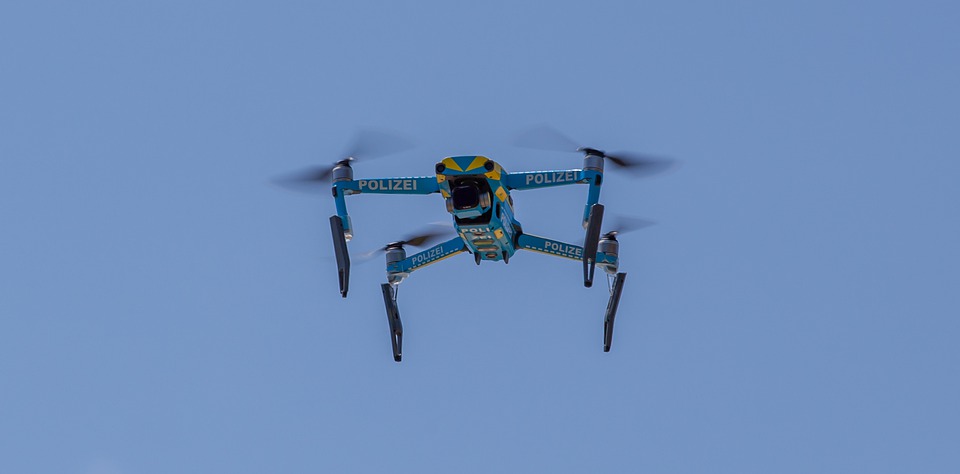
In this day and age, the advent of technology has had a two-fold impact on society as a whole. On the one hand, it’s given criminals a variety of new tools, methods and advantages, enabling them to perpetrate their crimes in ways never seen before. On the other, police forces around the globe are upping their game as well, determined to stay one step ahead of crime with exciting new innovations in technology, virtually all of which are safely out of reach of criminals. Glenn Yanovak, a private detective, has a list of all the latest updates in policing technology.
Specialized Drones and Robotics
Some of the most exciting new inventions in the last decade are quickly being put to use by law enforcement. One of the most noteworthy examples includes the implementation of specialized drones and other robots, designed primarily to go where human officers can’t. Whether it’s flying high in the sky providing air support, or venturing into a hazardous environment, these technologies promote a new level of awareness and security previously unattainable.
While it’s true that criminals have attempted to use drones for their own purposes, for every drone that is used for criminal intent, there are many more used by police forces today, and there are even anti-drone technologies being developed to stop illicit drone use in its tracks, including jamming signals, devices that physically capture a drone in a net, and even drones programmed to intercept other drones.
Another form of policing technology that is moving from fantasized impracticality to a practical reality is the laser. Commonly depicted within the realm of fiction as a weapon, the real-life application of lasers by law enforcement might surprise you. The most current laser technology is actually used for instant identification, specifically to determine the chemical composition of a suspicious substances. This revolutionary new laser is an early warning system, informing officers immediately of what would otherwise take hours in a lab to determine.
Next-Level Information
Information databases are nothing new in the world of law enforcement, but recent technological advances have really seen officers up their game in terms of the information they know and how easily they can access it. One such advancement that you might already be aware of is biometrics: This technology is a new way for individuals to be identified, usually through unique features such as (but not limited to) retinal scans, fingerprints, and even their DNA itself. Readily available at the touch of a button, it’s easier than ever for police officers to identify persons of interest. The near-total automation of a process that was traditionally done by hand, this state-of-the-art identification system goes hand-in-hand with modern security measures as well.
Augmented Reality
Glenn Yanovak explains that another innovation to the ways that police officers stay informed is the incorporation of augmented reality. Now, it’s no longer just about the concept of having information readily available; this information can now be relegated entirely to a heads-up display, in the same way that consumer-level products such as Google (News - Alert) Glass function. The idea is for officers on patrol to have exactly the information they need relative to the people and locations that are in the immediate area, with all of it visually corresponding in an intuitive way. Even in high-pressure situations, with augmented reality, officers won’t be caught off guard. In addition to the new ways that information from criminal (and other) databases, the databases themselves remain cutting edge in terms of their technological advances. Whether it’s license plates or camera feeds, everything is available in real time, all from the convenience of a patrol car.
Out of The Ordinary
Even though there are plenty of devices specifically built for use by police officers, they also make use of some of the more mundane technology that is available at the consumer level. One such example is smartphones and tablets, which have capabilities that can come in handy such as translation, recording video or the electronic writing of tickets. Whatever the case, the accessibility of smart devices is a huge plus, as officers can take them wherever they go with ease.
You might be surprised by how much of a role that social media can play in the apprehension of criminals. When a case is ongoing and suspects need to be located, it turns out that social media such as Facebook (News - Alert) posts or YouTube videos are one of the biggest helps in this arena. There are more than a few criminals out there who have displayed a lack of discretion regarding what they choose to post online, and anything detailing their crimes in question is valuable evidence that can be used to locate them, sometimes immediately.
The cornerstone of modern navigation, GPS is an invaluable asset for police officers who are frequently on-the-go. The technology can pinpoint important landmarks such as traffic stops, so that officers can better coordinate their efforts after seeing a bird’s eye view. GPS can also be beneficial for looking at current trends in crime, so that officers have an immediate heads-up when they are heading to trouble areas. Finally, GPS can be used towards the staffing and distribution of officers themselves, ensuring the proper coverage.
Glenn Yanovak is an experienced police officer and law enforcement professional. He is currently a private detective in the New Jersey area.
